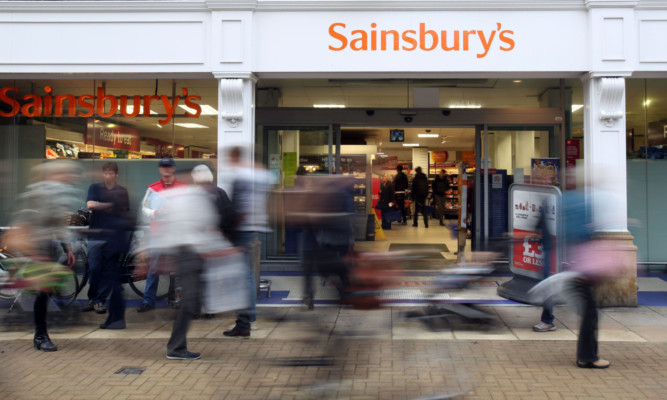Sainsbury’s has reported a pre-tax half-year loss of £290 million, providing further evidence of the challenges facing the UK’s supermarkets.
Britain’s third-biggest supermarket chain also warned that sales in supermarkets will fall for the next few years.
It has written-off £287m in the value of stores that will no longer be opening, and mothballed 40 proposed developments.
Underlying pre-tax profits for the six months to September 27 were 6.3% lower at £375m, with like-for-like sales down 2.1%.
Performance in the second half of the financial year is likely to be weaker than the first.
Sainsbury’s is to invest £150m in price cuts over the next year as it braces itself for several more years of challenging trading conditions and tries to win back lost trade.
A review of the business also found the need to improve the quality of 3,000 own-brand products, while the company will reduce capital expenditure and make £500m of cost savings over the next three years.
Sainsbury’s admitted that only 75% of its supermarkets are in the right locations and are “of the right size for our food and non-food offer”.
The remaining 25% have “under-utilised space,” and Sainsbury’s will look at installing concessions, such as Jessops camera shops.
The company said the grocery sector is undergoing structural change as customers shop more frequently, using online, convenience and discount channels more.
In common with its major rivals, the retailer is responding to the price war forced on it by discounters such as Aldi and Lidl.
Chief executive Mike Coupe said that Britain’s grocery market is undergoing a “once-in-a-generation” change.
Sainsbury’s strategy is evolving to address the continuing shifts in customer shopping patterns, leading to a greater emphasis on product quality and ease of shopping, and an increase in multi-channel shopping.
He continued: “We have good foundations for future growth in our supermarket and convenience estates, our online and non-food businesses and in Sainsbury’s Bank.
“However, we need to make sure that we are investing in the right areas and by reducing our costs and capital expenditure we are ensuring that we have the resources to enable us to do so.”
The chief executive said the new strategy will focus and energise the business to the benefit of customers, colleagues and shareholders.
Shares closed down 1.11% at 266.1p.
